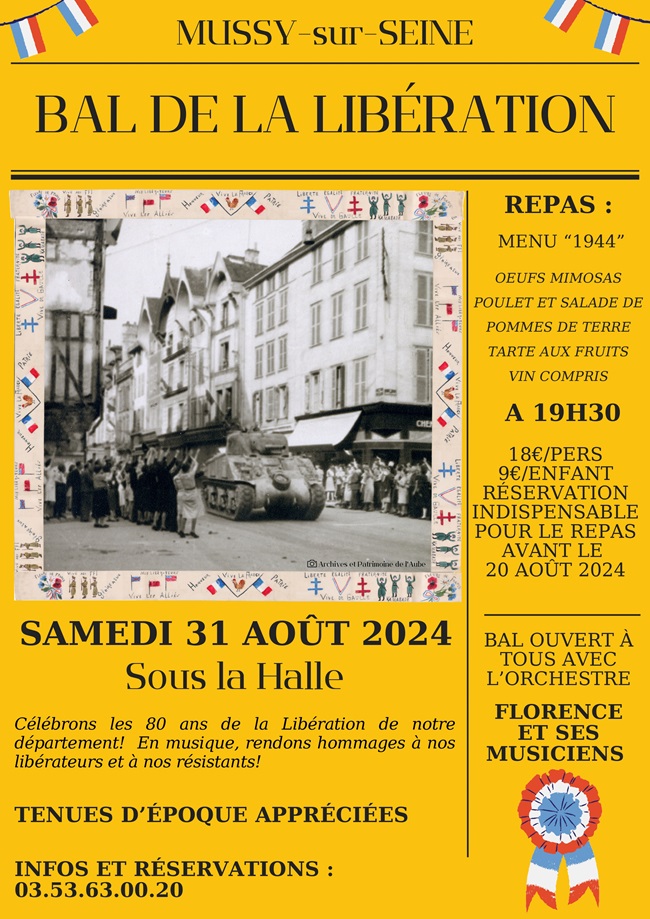After D-Day, the Slow and Painful Liberation of France
While the Allied landings in Normandy marked a turning point in World War II, military operations and German reprisals did not stop then and the liberation of the whole of France took time. This August, the Champagne region will be commemorating their freedom from Nazi occupation.
Early in the morning of August 3, 1944, on a day that would become almost unbearably hot, some 1200 French FFI (French Forces of the Interior) combatants who had engaged in a courageous, but losing battle with German troops the day before, began a stealthy retreat out of the forest where they were camped in the Champagne region: their goal, to save their lives, as much of their materiel and weapons as possible, and—undeterred in their mission—to regroup and be ready to help the Allied forces who were advancing through Normandy.
Earlier that summer, in late June, more than 200 members of the Maquis Montcalm had set up their base of operations in that forest, lying between Mussy-sur-Seine and Grancey-sur-Ource (Aube). Like resistance fighters all over France, they had begun to mobilize the minute the news of the Allies’ successful landing in Normandy had gotten to them, and they were doing whatever they could to aid the Allied effort—by hampering the activities of the German army wherever and however they could; by providing the Allies with intelligence through whatever means they could; and by preparing to assist the Allies in the liberation of France when their moment arrived.
Sometime in late July or very early August, the Germans were tipped off as to the location of the Maquis Montcalm. However, the intelligence they had received must have been inaccurate, or at least imprecise. The forest is quite large and they entered it at the wrong place, which gave the maquisards warning and precious time; most of them were able to escape and melt back into the population. When the Germans finally found the location of their camp on the morning of August 4, it was empty, and all but 46 of the maquisards had escaped. But that did not automatically mean they were safe. German reprisals after the chasing of the maquisards from their safe haven in the forest were immediate, vicious, and brutal, and involved civilians as well as résistants.
The next few weeks were terrifying ones, and bloody ones, for the people of southern Champagne, as they waited for deliverance to come. And it was coming.
But as German defeat became more certain, retaliation by the Germans became more brutal. On August 24, following the destruction of a German sidecar by FFI troops attempting to block their retreat, in Buchères, a village south of Troyes, the 51st SS-Brigade massacred 68 people, including twenty children, some of them babies.
Representative stories like these—for similar stories took place in other parts of France as well—detail the arduous, hard-fought months after the Allied landing in Normandy, until at last France was liberated.
This year, the 80th anniversary celebrations of D-Day in June focused on telling the triumphant story of the beginning of the end for the German occupation of France. But there was much more fighting to do before the war in Europe was finally over, in May of the following year.
Still, several significant events during the month of August 1944 cumulatively marked another important turning point for the war in France.

Affiche Bal de la Libération v finale
On August 15, “Operation Dragoon” brought Allied troops from North Africa to the southern coast, where they successfully landed between Toulon and Cannes. As they pushed their way forward from the south, the Allies continued to fight their way south through Normandy. The Allied forces were closing in on the Germans, and as they did they were joined along the way by units of various factions of the resistance.
Their participation was not negligible. In his memoir, Crusade in Europe, General Dwight D. Eisenhower wrote “Throughout France, the Free French [were] of inestimable value in the campaign…on every portion of the front we secured help from them in a multitude of ways. Without their great assistance, the liberation of France and the defeat of the enemy in Western Europe would have consumed a much longer time and meant greater losses to ourselves.”
Finally, on August 25, Paris was liberated, and on August 25-26, Troyes was liberated under the command of General Patton.
In recognition of these key events in the path toward eventual victory, throughout this month, all over France there will be celebrations—from Provence to Paris, and in Champagne as well.
In Mussy-sur-Seine, at the wonderful Musée de la Résistance de l’Aube, visitors can get a detailed picture of exactly how complicated the military strategies to achieve victory were; and how difficult it was for civilians to stay out of harm’s way in the process.
On August 31, there will be a major anniversary celebration in Mussy, with lectures in the afternoon (in French), a celebratory meal, and a bal de la libération, all of which are open to the public.
In the afternoon, four regional historians will address various themes to put into context the year 1944 in Aube—and what remembering it means today. Then in the evening there will be a 1944-style meal, and a dance.
Sarah Hacquart, officer of public affairs for the museum, is really looking forward to this event. “I can’t wait for this great day!” she says. “It’s very important to not forget the sacrifice of so many people to free our beautiful country.” She warmly invites the public to join in the celebration on August 31. “There will be two opportunities to commemorate this day with us,” she says. “During the afternoon, there will be lectures from historians, and in the evening, a meal and a 1944-style dance.”
Afternoon Program: Priority given to those who are registered. (2€/ person)
Celebratory Meal: Reservations must be made and paid in advance by August 20. Adults (16 yrs +) 18 €; Children (up to 15 yrs 9 €). Checks can be sent to Musée de la Résistance, 6 rue Boursault 10250 Mussy–sur–Seine. Checks should be made to l’association PMVE.
The dance is open to the public, free, and there is no need to register. Visitors are encouraged (but not required) to come to the dance dressed in the style of the period.
For more information: [email protected] or 03-53-63-00-20
Lead photo credit : The FFI parade at the liberation of Cognac in September 1944 © Muro, CC BY-SA 4.0 via Wikimedia Commons
Share to: Facebook Twitter LinkedIn Email
More in champagne, liberation of France, remembrance, World War Two
Leave a reply
Your email address will not be published. Required fields are marked *





